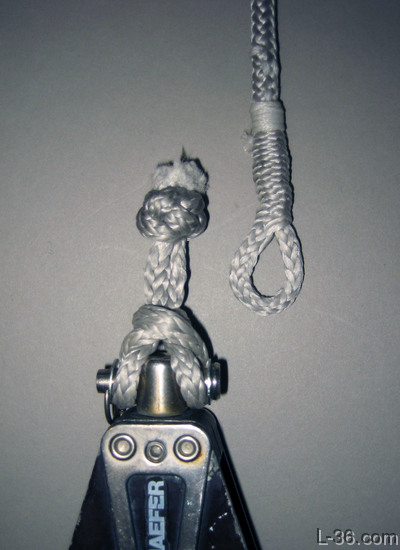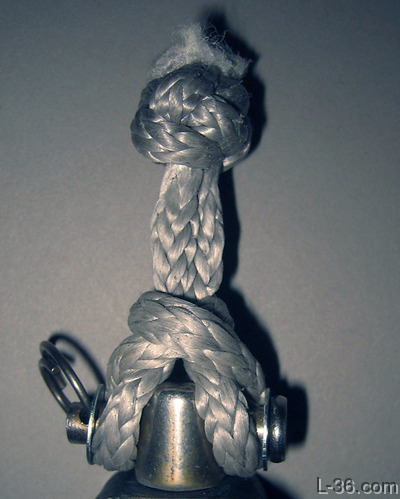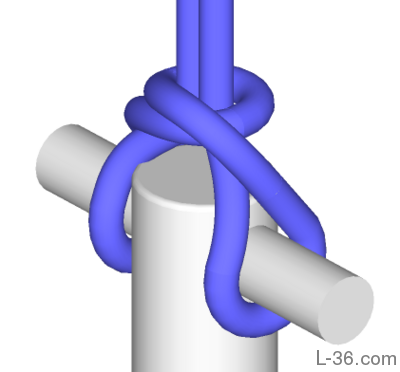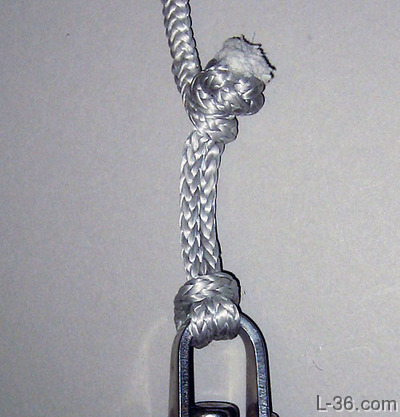Soft Shackles

Soft Line Shackle on a Block
By Allen Edwards
Using a line shackle and stopper loop you can in some cases eliminate hard shackles even from places that would be impossible to do with normal soft shackles. The stopper loop can be "tied" to the shackle end and the soft shackle integrated into the line for a clean light installation.
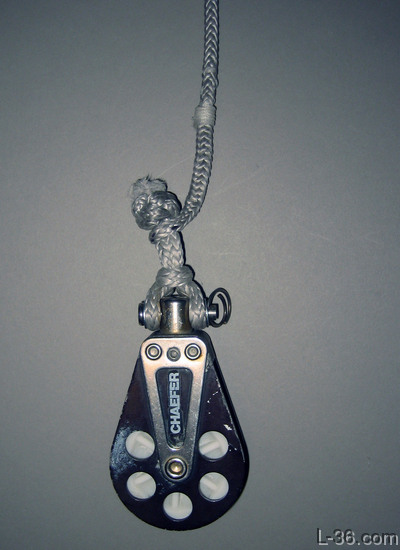
I was crewing on a race this weekend. The boat bent some shackles that got twisted wrong and the skipper was complaining that larger shackles added too much weight so he just bent his shackles back when they got tweaked, which apparently happened often. I also noticed that his running backs were getting old and suggested he could just splice them onto the blocks without the shackle and save some weight. He said he needed to be able to replace the block in case it blew out. That got me thinking and I came up with the idea of using what I am calling a soft line shackle. The soft line shackle is just a normal splice in 12 strand single braid but with a very small eye and a stitch away from the eye so that it can be opened to pass a diamond knot thought it. A stopper loop is made in another piece of line and that serves as the other half of the shackle. In other words, the shackle is built into the line and the stopper loop is used to connect the line to, in this case, a block.
Start with a standard 12 strand class II rope splice but don't lock stitch it in the normal way. Make the eye just large enough to pass two sections of line. You are going to lock stitch the splice but not near the eye as you normally would. Pass the needle through the splice up about 3 inches and open the eye and check that it can just pass a diamond knot. It should be a snug fit. Move the needle if needed to get the desired fit. A tight fit offers some security, a lose fit makes it easier to take on and off. Thus the size of the loop is somewhat application dependent. When you get the fit you want, lock stitch from that point back up the line. I like to go up 8 stitches, turn 90 degrees, back down 8 stitches, then apply some whipping back up the line so there is a clear end to the shackle eye.
This picture shows the eye in the open position. The stopper knot is just a couple of feet of line with a
diamond knot on the end.
In this picture, the block has its shackle removed and just the clevis pin with a couple of washers. The knot around the pin has some similarities to a butterfly bend and is very secure.
Here is a sketch of the knot. To form it, place the stopper loop over the pin, put a twist in it, and fold it back. Then feed the diamond knot through the loop you just formed. Pull it snug making sure the washers are on the outside. A single washer is likely sufficient if the head of the clevis pin is large enough.
Some blocks have built in loops rather than removable shackles and clevis pins. In that case, just use a larks head loop to attach the stopper knot.
NOTICE: Some pages have affiliate links to Amazon. As an Amazon Associate, I earn from qualifying purchases.
Please read website Cookie, Privacy, and Disclamers by clicking
HERE.
To contact me click
HERE. For my YouTube page click
HERE


